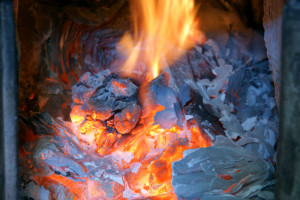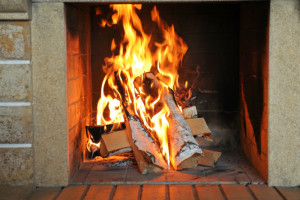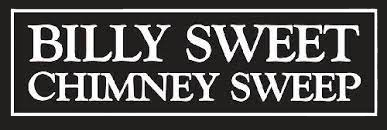by Billy Sweet | Jan 9, 2018 | Fire Safety
January has the highest amount of house fires in a calendar year. Whether it’s from heat appliances, kitchen equipment, electronics, or clothes dryers, these fires account for an unnecessary loss of property and life each year. Not only does a high concentration of residential fires occur in January, but they also happen oftentimes overnight, while homeowners are asleep.
House fires are an unwelcome and dangerous surprise, but one that can be prevented. When they can’t be prevented, preparation can help save your life. Half the battle is remembering fire safety when using household appliances—especially your fireplace.
Your Safest Fire
You may have the most advanced, top-of-the-line fire appliance with the highest safety rating on the market, but if you don’t operate it correctly, and with safety in mind, it will not be safe. It will actually be dangerous.
- Know your appliance.
Whether you have a fireplace, stove, or insert, read your owner’s guide and get to know the parts. Not sure how to use a damper? Learn how the damper can help you light a fire and keep your family safe by using it properly. Your stove may have a shaker to drop ashes out of the fire box. It may have a hopper to feed pellets to the fire. Get to know your appliance BEFORE your first burn.
- Burn proper fuel.
You should only burn properly seasoned wood in your wood insert, stove, or fireplace. Your gas fireplace should be connected to a natural gas line by a gas company. Your pellet appliance should only burn manufactured pellet products. Burning the wrong type of fuel in your fireplace can bring down efficiency, damage the system, and even raise the risk of fire. Your flue liner may not be appropriate or safe for all fuel types. Know your appliance, and burn the correct fuel for your appliance.
- Use fireplace accessories.
Special, long-handled accessories can help you maintain your fire safely. You can purchase these accessories at a home improvement store and they should include a shovel, poker, and broom. While you’re at it, you can purchase leather gloves to protect your hands from burns and extreme temperatures.
- Never leave a fire unattended.
Once a fire is burning in a fireplace, it shouldn’t be left until it is out. Never leave children unattended around a fire, and utilize glass doors, screens, and gates to prevent accidental falls and burns.
- Dispose of ash periodically.
If ash is allowed to build up in the firebox, it can become crowded, causing hot ashes, coals, and even flaming logs to fall out of the fire. Dispose of ash safely and leave a thin layer of ¼ inch to insulate and protect the bottom of the firebox.
- Install smoke alarms and carbon monoxide detectors.
Check the batteries regularly, and practice fire drills with your family. Plan an escape route (that includes 2 ways out) and practice it with your entire family, including children.
Contact Us Today
It’s important to remember that firefighting is for firefighters. It’s not a job for homeowners with fire extinguishers. If you have a flue fire, you won’t be able to access it before it puts your life in danger. The best way to keep your family safe throughout winter is to practice fire safety, make sure your chimney system is clean and safe, and prepare for an emergency, just in case. It may save your life.
Call Billy Sweet Chimney Sweep and let us help you have your safest fire this winter.
by Billy Sweet | Sep 26, 2017 | Fire Safety
House fires are deadly! Out of around 500,000 structure fires reported in 2015, there were 2,685 civilian deaths, 13,000 injuries, and $10.3 billion in property loss. House fires account for only half of total fire reports for that year. However, according to the National Fire Protection Association (NFPA), they account for 82 percent of civilian fire deaths. House fires cause the most deaths. This is because people are comfortable in their homes, they aren’t prepared for fire, and they don’t expect it.
Billy Sweet and National Fire Prevention Week
It has been our goal for over 30 years to educate our community about fire safety. This helps to prevent the loss of property and life that continues to happen each year. At Billy Sweet Chimney Sweep, we strive to provide the best and most comprehensive chimney maintenance! During National Fire Prevention Week, we would like to stress again, how important fire prevention should be in our community!
You cannot prevent a fire 100 percent, so it’s important to BE PREPARED. You can make fire preparations many ways, and educate your family many ways. This week, there are many resources to choose from.
Be Prepared for Fire
According to the 2015 fire stats, there was a structure fire reported every 86 seconds in the US. These fires can be caused from electrical malfunction, cooking mishaps, heat appliances, and just about anything that uses energy in your home (in the modern home, that’s nearly everything). Since you cannot prevent a fire 100 percent, it’s best to prepare for the worst, because during a fire, every second counts. A few seconds of prepared escape can save you a devastating loss.
You can prepare for a fire by:
- Checking all of your smoke detectors regularly.
- Planning an escape route that includes 2 WAYS OUT.
- Teaching your family how to check a doorknob for heat.
- Teaching your family to close each door as they evacuate.
- Placing a visual of your escape route on walls inside your home.
- Plan activities with your children (visit the fire station, print out activities from the NFPA website, ask their teachers about school activities.)
Complete these things before National Fire Prevention Week, and make it a regular review at this time of year. House fires occur most during the winter months (January is the highest concentration of house fires), and they usually happen at night.
Prevent Fires at Night
Prevent overnight fires by making sure that your fire is completely out before bed. Do not leave a fire unattended. Shut off your clothes dryer. It should not be running while you are sleeping or out of the house. You cannot prevent a fire while you aren’t home. Check that the stove top and oven are switched off as well as space heaters. These types of heat appliances are not made to be left unattended, and it’s not safe to do so.
You can lower fire risk by maintaining your home properly. Keeping your dryer vent clean and safe, having electrical issues and fuel connections checked by professionals, scheduling routine chimney and fireplace maintenance = these are just a few ways to have a safer home and family!
Billy Sweet Chimney Sweep is here to answer your questions about fire prevention and safety. Call 800-248-4900 today, and ask us how we’re preventing fires in our homes and offices each day.
by Billy Sweet | Feb 27, 2017 | Fire Safety
Much of our service area is experiencing an uncharacteristically dry winter, and even in the city fire is a hazard. Debris on roofs, near chimneys, and even in the chimney and firebox can become a fire hazard during burning season. The average homeowner won’t be aware of a fire hazard in the chimney system without an expert to discover it. You can reduce fire hazards, however, and prevent catastrophic damage by taking certain measures this winter.
Schedule Routine Maintenance
The Chimney Safety Institute of America (CSIA) and the National Fire Protection Association (NFPA) together recommend routine professional maintenance. An annual inspection of the entire chimney system can reveal insufficiency and hazards that might go unnoticed until it decreases the chimney’s efficiency or causes a fire.
Having the chimney swept regularly can prevent a buildup of creosote and soot that becomes a fire hazard. When a fire is burning, these natural byproducts are constantly entering and often settling on the chimney walls. A chimney sweep is the only way to remove it.
Burn Only Seasoned Wood
It’s important to burn only properly seasoned wood to insure that your fire burns completely and safely. Burning wood that is too wet will cause excess creosote and soot in the chimney. Leaves and trash are too light and will rise up the chimney ignited, raising fire risk.
Keep the Roof and Gutters Clean
Your fireplace, though inside your home, can affect the outside. Sparks can sometimes fly out of an extremely hot chimney and ignite debris on the roof. If gutters are filled with dry leaves and the roof is covered in leaves and debris, it can easily ignite, causing a dangerous fire. It’s a good idea to clean the gutters during regular monthly home maintenance, especially if you burn fires often.
Use the Damper to Control an Unruly Fire
The chimney has many parts that keep it working safely and properly. You can use the damper to control a large fire as well as glass doors if your fireplace is equipped.
Install a Screen or Glass Door
A custom glass door or a screen can prevent sparks from flying out of the fireplace and igniting decorations or furniture near the hearth. It’s best to keep furniture and home decorations, wall hangings, and curtains a safe distance from the fireplace opening.
Our top priority at Billy Sweet Chimney Sweep is the safety and comfort of all of our customers in Boston, North Shore, and Portland. We offer preventative services to help reduce fire hazards through the winter, and to keep your chimney system working efficiently all season.
To schedule an appointment with Billy Sweet Chimney Sweep call today or schedule an appointment online.
by Billy Sweet | Feb 25, 2016 | Fire Safety, wood burning, Wood Stove
Hazardous Waste
Depending on your appliance you may have an ash box beneath your fire box. Some of these actually pull out, allowing you to easily dump it. Others have a door beneath the firebox for ash removal, and some furnaces keep the ash in the firebox itself. No matter the type of appliance you use, however, the ash can build up quickly and become a hazard.
Ashes can be dangerous because even when they look cold, and seem cold, they can actually be very hot. These ashes, when allowed to fill the firebox, can fall out onto carpet, or nearby combustibles in your home and catch fire. They can also be dangerous if handled incorrectly.
Recommended Tools
Ash Bucket
You can pick up an ash bucket at a local hardware store or get a recommendations from one of our Billy Sweet Chimney Sweeps.
Ash Shovel
Many fireplace tool sets will come with a shovel, a broom, and a poker. You may find that you need a longer shovel to keep your hands or face away from the fire or hot coals.
Gloves
Though not required, you may find that gloves add extra protection to your skin while removing hot coals and ashes.

When to Remove Ashes
Although it seems a good idea to remove ashes often, some even removing them daily, it isn’t recommended. Chimney Safety Institute of America (CSIA) recommends leaving at least an inch of ash in the fire box at all times. This ash insulates the coals to keep them hot longer, while also keeping the bottom of the firebox cool, protecting your furnace and your flooring from excess heat.
However, it is a good idea to remove ashes when they begin to cover the coals following a regular burn cycle.
Removing the Ash
When you’re ready to remove the ash you should have the ash bucket on hand. Shovel the ashes into the bucket, taking care to not stir the ash more than needed. Shovel the ashes from the back of the firebox where there may be buildup, and remove it from the front where it may cover a vent. Once you have shoveled all you want into the bucket, set it aside to cool. It can cool outside or inside, but should be kept away from combustibles.
Disposing of Ash
In some areas and cities you may be able to bag cooled ashes, and simply place them with your regular trash pick-up. If this isn’t a possibility for you, you may want to utilize those ashes in creative ways. Some ways people use ashes include:
- In the garden. You can mix ashes with soil to change the acidity or sprinkle ashes directly onto plants to repel bugs.
- In the kitchen. You can mix ashes with water to shine silver, and clean glass and stainless steel. Save on oven cleaner by keeping this mixture on hand.
- On the driveway. Spread ash onto the driveway, porch, or sidewalk to add traction and to melt ice during winter weather.
- On your pet. To neutralize odors on household pets, rub a small amount of ash into the fur. You can also use ashes beneath cat litter to neutralize odors in the litter box.
However you use your ashes, it’s important to take safety precautions to prevent fire, burns, and injury.
by Billy Sweet | Jan 27, 2016 | Fire Safety
1. Cut or purchase wood that is properly seasoned. This means it is cut and set aside to dry before used as firewood. Soft wood can dry for around six months, but hard wood should be left to dry for up to two years.
DON’T burn wood that isn’t properly seasoned. Doing so can raise the amount of creosote that accumulates in your chimney interior causing obstruction and chimney fires. Burning wet or green wood can also cause particle pollution in your home, which can lead to allergies or other health problems.

2. Have your chimney inspected and swept by a professional. “The U.S. Consumer Product Safety Commission, the U.S. Environmental Protection Agency, the National Fire Protection Association, and the American Lung Association – are some of the organizations that now encourage the regular maintenance of home heating systems and their chimneys in order to keep “the silent killer” at bay.” Read more about how your chimney can affect your health at the Chimney Safety Institute of America (CSIA).
DON’T try to clean your chimney yourself. Our chimney sweeps here at Billy Sweet’s Chimney Sweep are licensed, insured, and CSIA-certified. You cannot ensure the safety of your chimney unless it is inspected by a professional before wood-burning season.
3. Ventilate your home or business while your fireplace is in use. As gas is released through the chimney it changes the pressure in your home. Air pulled through the chimney is drawn from the house, and if the air isn’t replaced, the chimney may not work properly. This can be remedied by leaving a window cracked somewhere in the home.
DON’T operate large appliances that compete with your chimney for air or open you furnace door while ceiling fans or ventilation systems are running. When your fireplace works correctly, your heating system is more efficient.
4. Use proper kindling to start your fire. If there aren’t remaining embers in your furnace or fireplace, you should be able to ignite a fire using kindling and a small amount of paper.
DON’T use flammable fuels to start a fire. The vapor can ignite and start a chimney fire, or a house fire. If you use artificial logs, don’t treat them as real logs. Carefully read warning labels and instructions before putting artificial logs into your fireplace or furnace.
5. Feed your fire regularly to keep the fire at a steady temperature. This is the most efficient way to use a fireplace or furnace for home-heating.
DON’T overload your fire. Overloading your fireplace or furnace can overheat the walls around the furnace or fireplace and possibly damage the chimney.
Safety is Our Priority
Your fireplace is no laughing matter. According to the National Fire Protection Association Fire Analysis and Research Division “in 2011, an estimated 19,500 reported home structure fires involving fireplaces, chimneys and chimney connectors.” Click here for more tips to prepare your fireplace for winter weather.
At Billy Sweet’s we don’t want your business as the result of a chimney fire! We want your home or business to be safe this winter.
by Billy Sweet | May 10, 2014 | Chimney Maintenance, Fire Safety
Your chimney liner protects the exterior of your chimney wall from excessive heat. Over the life of your chimney, your liner may need repair or to be replaced.




